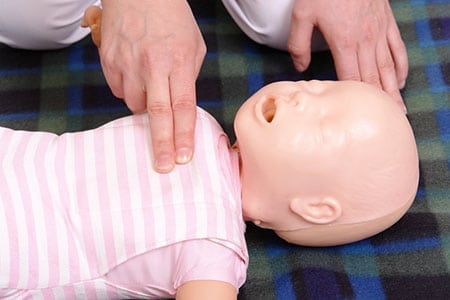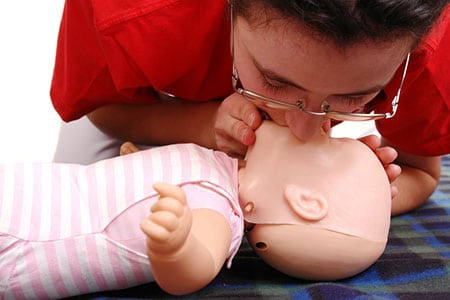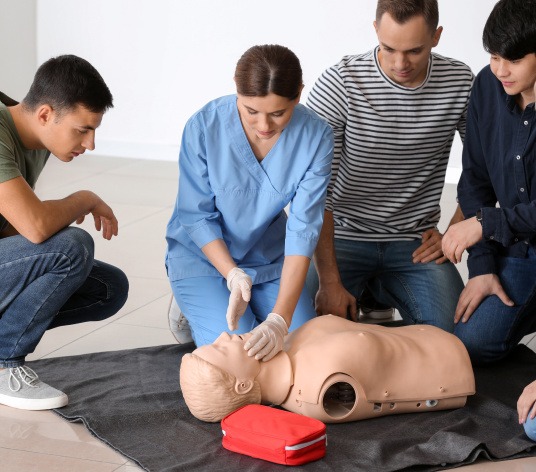Chapter 8: Infant CPR
When a baby stops breathing, it’s usually because they’ve had a breathing emergency, not a heart issue. That’s why giving breaths—along with compressions—is so important when performing Cardiopulmonary Resuscitation (CPR) on an infant.
The steps for helping an infant are mostly the same as with a child, but there are a few important differences to keep in mind:
- Compressions: Use just two fingers placed in the center of the infant’s chest, between the nipples. Push down hard and fast about 1½ inches deep. The goal is at least 100 to 120 compressions per minute.

- Airway: Be extra careful when opening an infant’s airway. Tilt the head back gently—but not too far—since pushing too far back can actually block the airway instead of opening it.
- Breaths: When it’s time to give breaths, gently cover both the baby’s mouth and nose with your mouth. If that doesn’t quite work, just make sure the nose is covered and the mouth is closed so no air leaks out.

This part of your Online CPR/AED Course is all about building confidence. Knowing how to react during an infant CPR emergency can make all the difference when every second matters.


